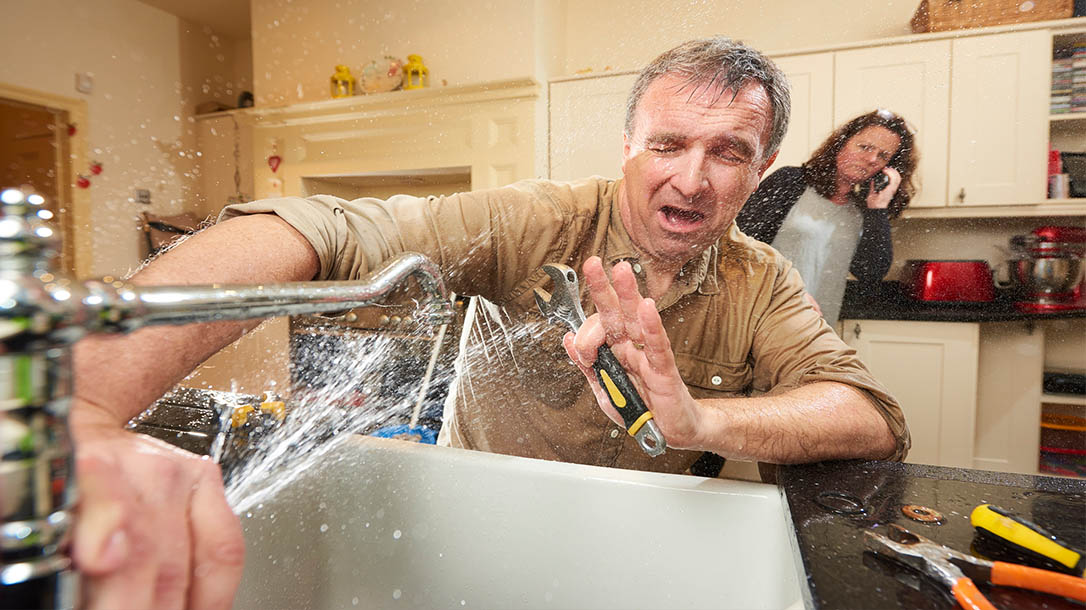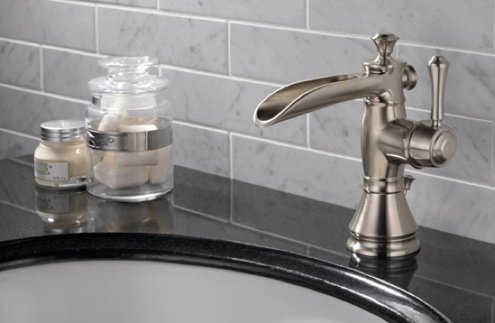Why It's Critical to Rectify a Faulty Faucet
Why It's Critical to Rectify a Faulty Faucet
Blog Article
We have discovered this article pertaining to How to Fix a Dripping or Leaky Faucet directly below on the internet and accepted it made sense to quickly share it with you on this page.

Dripping taps might appear like a small hassle, yet their impact exceeds simply the annoyance of the noise. From drainage to incurring unnecessary monetary prices and health dangers, overlooking a dripping faucet can bring about numerous effects. In this post, we'll look into why it's crucial to address this usual family problem promptly and properly.
Waste of Water
Ecological Impact
Trickling faucets contribute considerably to water wastefulness. According to the Environmental Protection Agency (EPA), a solitary tap dripping at one drip per second can throw away more than 3,000 gallons of water per year. This not just pressures water sources but additionally affects environments and wild animals depending on them.
Financial Prices
Raised Water Bills
Beyond the environmental impact, dripping faucets can blow up water costs significantly. The collected waste in time equates into greater energy costs, which might have been avoided with timely fixings.
Possible Home Damage
Moreover, long term leaking can lead to damage to fixtures and surfaces bordering the tap. Water buildup can create staining, rust, and even structural problems if left ignored, causing extra repair service prices.
Wellness Worries
Mold And Mildew and Mildew Growth
The consistent presence of moisture from a trickling tap produces a suitable atmosphere for mold and mold development. These fungi not just endanger indoor air top quality but likewise pose health threats, especially for individuals with respiratory system conditions or allergies.
Waterborne Illness
Stagnant water in trickling faucets can come to be a breeding ground for microorganisms and other microorganisms, increasing the danger of waterborne diseases. Pollutants such as Legionella microorganisms flourish in stationary water, possibly resulting in severe illnesses when consumed or breathed in.
DIY vs. Professional Repair service
Pros and Cons of DIY Repair Service
While some might try to deal with a dripping faucet themselves, DIY repairs come with their very own collection of obstacles. Without correct expertise and devices, do it yourself efforts can worsen the problem or result in incomplete repairs, prolonging the issue.
Advantages of Hiring a Specialist Plumber
Hiring an expert plumber ensures that the underlying root cause of the trickling faucet is attended to effectively. Plumbing technicians have the competence and tools to detect and fix tap issues effectively, saving time and lessening the threat of more damages.
Step-by-Step Overview to Fixing a Dripping Faucet
Tools Required
Before attempting to deal with a trickling tap, collect the essential devices, consisting of an adjustable wrench, screwdrivers, replacement parts (such as washing machines or cartridges), and plumber's tape.
Usual Tap Issues and Their Solutions
Determine the type of faucet and the details concern causing the drip. Typical problems consist of damaged washers, rusty shutoff seats, or defective O-rings. Refer to supplier directions or online tutorials for detailed assistance on repairs.
Safety nets
Regular Upkeep Tips
To avoid dripping faucets, perform routine upkeep such as cleaning up aerators, evaluating for leaks, and changing worn-out parts without delay. Additionally, think about mounting water-saving tools or upgrading to a lot more reliable fixtures.
Significance of Prompt Fixes
Addressing dripping faucets as soon as they're observed protects against more water wastage and potential damages, inevitably conserving both water and cash in the future.
Influence On Residential Property Worth
Understanding of Well-Maintained Residential Property
Preserving a property in good condition, consisting of resolving maintenance issues like dripping faucets, enhances its regarded worth and value amongst prospective buyers or tenants.
Impact on Resale Value
Properties with properly maintained plumbing fixtures, consisting of faucets, command greater resale values in the realty market. Addressing leaking faucets can contribute to a favorable impression throughout residential or commercial property examinations and negotiations.
Ecological Duty
Individual Contribution to Conservation
Taking duty for fixing leaking taps straightens with more comprehensive efforts toward water conservation and ecological sustainability. Every person's activities jointly make a substantial impact on preserving precious resources.
Sustainable Living Practices
By focusing on prompt repairs and adopting water-saving practices, people add to lasting living methods that profit both present and future generations.
Verdict
Attending to a dripping faucet surpasses mere comfort; it's a vital action towards conserving water, minimizing economic costs, and protecting wellness and residential or commercial property. Whether with do it yourself fixings or professional assistance, taking action to repair leaking faucets is a little yet impactful method to promote responsible stewardship of resources and add to a much healthier, extra lasting future.
How to Fix a Leaky Faucet: Step-by-Step Repair Guide
A leaky faucet may seem like a simple annoyance, but if it's not fixed promptly, that leak could cost hundreds to potentially thousands. From water damage to mold, mildew, and high water bills, even a tiny leak can be catastrophic if left unattended. Damage like this can even affect the overall value of your home, so it's important to take the right approach for leaky faucet repair. You may need the help of a plumber in some cases, but we've got a few tips you can try on how to fix a leaky faucet before calling the pros.
Four Faucet Types
When you're learning how to fix a leaky faucet, the first step is knowing what kind of faucet you're working with! There are four common types.
Cartridge Faucets
Cartridge faucets come in one- or two-handled varieties. In one-handled cartridge faucets, hot and cold water combines in a single cartridge. In the two-handled versions, hot and cold water are controlled separately and mixed in the faucet.
Ball Faucets
Ball faucets have a single lever you push up and down to adjust the pressure and rotate to change the temperature. A slotted metal ball controls the amount of water allowed into the spout.
Compression Washer Faucets
They're the oldest type of faucet, but they're still used in many homes — especially older ones. Compression faucets have two separate handles that, when turned, raise or lower the washer that seals a water valve. This valve stops water from flowing through the faucet when it is turned off.
Disc Faucets
Disc faucets rarely need to be repaired due to their maintenance-free design. The water flow is controlled by two discs — the upper one raises and lowers against a fixed lower disc, creating a watertight seal. If your disc faucet starts leaking, you may need to replace the seals or clean residue buildup from the inlets.
Fixing a Leaky Faucet
Step 1: Turn Off the Water
Whether you're learning how to fix a leaky bathtub faucet or how to fix a leaky kitchen faucet, always turn off the water supply to your working area when you're fixing a leak. The last thing you want is a flood added to your list of things to fix.
Look for the shutoff valves below your sink or around the tub and turn them clockwise to stop the water flow. If your faucet doesn't have shutoff valves, you may need to turn off the water for the whole house. Check to make sure it's off by turning the faucet on. If nothing comes out, you're ready to start the repair.
Step 2: Take Apart the Faucet
How you disassemble your faucet depends on the type of fixture you have. You can use a flathead screwdriver to remove the caps on top of the handle or handles for cartridge and compression faucets. Inside, you should see handle screws. Unscrew these with a screwdriver to remove the handle.
Disc- and ball-style faucets will typically have an inlet screw near the handle, and removing that will reveal the interior of the faucet.
Detach the Valve Stem
For cartridge- and compression-style faucets, you'll see the inner valve stem or cartridge once you remove the faucet handles. If you have a compression faucet, unscrew the brass valve stem. If you have a cartridge faucet, pull out the cartridge. If your cartridge has been in place for a while, it may require some tools or extra force to remove it due to mineral deposits.
Examine and Replace Parts
Once you've removed the parts, check them out to confirm what needs to be replaced. You may see corroded rubber washers, O-rings, stems, or cartridges. On a ball-style faucet, check the seats and springs for damage.
If you need to repair a leaky disc faucet, check the inlet and seals on the lower disc.
Once you determine what parts must be replaced, visit your local hardware store. Bring the damaged parts with you to ensure you can purchase the correct components to replace them.
Clean Valves and Faucet Cavity
If you've removed a stem or cartridge, you may notice mineral buildup in the faucet's threads. Use white vinegar to clean the valve seat by soaking it for a few minutes, then scrub it away with a soft toothbrush and rinse with warm water. You can also clean the interior of the faucet in the same way.
Reassemble the Faucet
Once your faucet is cleaned and the required parts have been replaced, it's time to reassemble it. Put the pieces back together and slowly turn the water supply back on. Doing this slowly is crucial because too much initial water pressure can damage the new hardware you've just installed.
https://homewarranty.firstam.com/blog/how-to-fix-leaky-faucet

Do you like reading up on ? Give a remark further down. We would be happy to see your opinions about this blog posting. In hopes that you come back again before long. Do you know somebody who is interested in the topic? Be sure promote it. Thanks a lot for your time. Kindly stop by our blog back soon.
Report this page